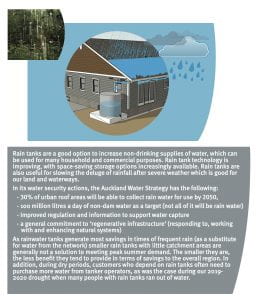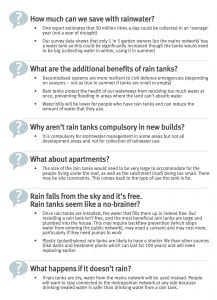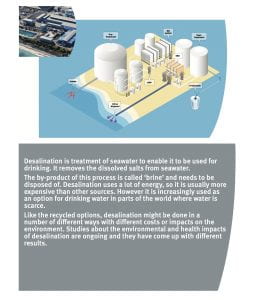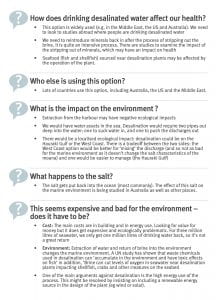Links and Resources
This is an edited version of the website that the citizens’ assembly used during the process. All the videos that contain identifiable information has been removed, in accordance to the requirements of the UAHPEC.Day 1 recordings and materials
Introduction and background to the issue
Mark Bourne Chief Operations Officer, Watercare
Introduction to the options
Anne Bardsley Deputy Director, Koi Tū
Q&A with Mark Bourne
Mark Bourne Chief Operations Officer, Watercare
Expand for details
Assembly members asked:
- “What happens to our wastewater?” (00:00)
- “What about microplastics, pharmaceutical byproducts and other chemicals?” (01:14)
- “Is any of the wastewater that gets discharged actually of drinking quality?” (01:48)
- “Does Auckland depend more on the Waikato river than on the dams that we have?” (03:56)
- “Can we rely on the Waikato region to keep supplying water from the river?” (04:11)
- “Has the water quality of the Waikato river been affected?” (05:22)
- “How is the Waikato supply affected by Auckland’s increasing use of water from the Waikato river?”
(06:16) - “What happens to Auckland’s allotted water quantity if a drought affects the Waikato river?” (07:29)
- “What is Watercare doing to prevent water leakage from the system?” (09:37)
- “Do the future projections anticipate a drop in water usage per capita?” (11:15)
- “Does the cost of delivering water to Auckland differ depending on the source?” (11:58)
- “Is treating wastewater to meet drinking water standards and reusing it a viable option?” (12:51)
Q&A with Expert panel
Robert Keessen Technical Director, Aurecon
Kobus van Zyl Water infrastructure, University of Auckland
Andrew Chin Engineering and planning, Healthy Waters
Iain Rabbitts Water treatment engineer, Lutra
Dan Hikuroa Te ao Māori, climate & environmental science, University of Auckland
Expand for details
- “Why can’t we just build another dam?” (00:00)
- “Won’t we fix this with all of us having rainwater tanks?” (01:12)
- “The booklet mentions Te Mana o te Wai. What does this actually mean?” (03:28)
- “What’s wrong with taking more water from the Waikato?” (05:19)
- “What does this have to do with Three Waters reform?” (09:34)
- “What if we treated water as a taonga?” (11:14)
- “How can you be sure that any of these options are safe?” (14:40)
- “We all use way too much water. Can’t we just use less?” (16:47)
- “Why don’t we just catch stormwater and use that?” (19:25)
- “NZ has other places we could get water from. Why aren’t we looking on a national scale?” (21:11)
- “If we keep using water from the Waikato, will they have enough for their needs?” (22:27)
- “Could we use water treated to a lower standard for activities that don’t need a high level of water purity?” (24:45)
- “What environmental impact do dams have?” (27:20)
- “If we all saved a lot of water, how would that affect Watercare’s revenue?” (28:16)
Trade-offs and decision-making
Anne Bardsley Deputy Director, Koi Tū
Day 1 expert chat: Option 3 – Purified direct recycled water
Peter Dennis Managing Director, Hunter Water, Australia
Day 1 expert chat: Option 4 – Treated recycled water (not for drinking)
Abel Immaraj National Water Resource Systems Leader, Aurecon, Brisbane
Day 1 expert chat: Option 5 – Purified indirect recycled water
Darren Romain Urban Water Resilience Market Lead, Aurecon
Day 1 expert chat: Option 6 – Desalination
Chris Povey Design Director, Stantec, Melbourne
About Koi Tū
Koi Tū: The Centre for Informed Futures is an independent, transdisciplinary think tank and research centre at the University of Auckland.
We generate knowledge and analysis to address critical long-term national and global issues challenging our future.
Address
Koi Tū: The Centre for Informed Futures
The University of Auckland
Level 7, Building 804, 18 Waterloo Quadrant, Auckland Central 1010
Newsletter: Subscribe here
Twitter: @InformedFutures
Contact
Future transport email:
ccl-transport@auckland.ac.nz
Future water email:
ccl-study@auckland.ac.nz
Phone: 027 271 9907















